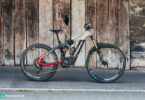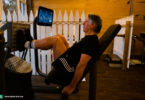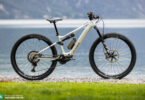The Lab: The Busch + Müller LEVAL curve light – The clever assistant

The Busch + Müller LEVAL curve light is a new addition to the German bike light manufacturer’s range, designed to improve illumination, especially on dark roads and paths, for just under 100 euros. Dive into our review to find out if the curve light impressed us in our test.
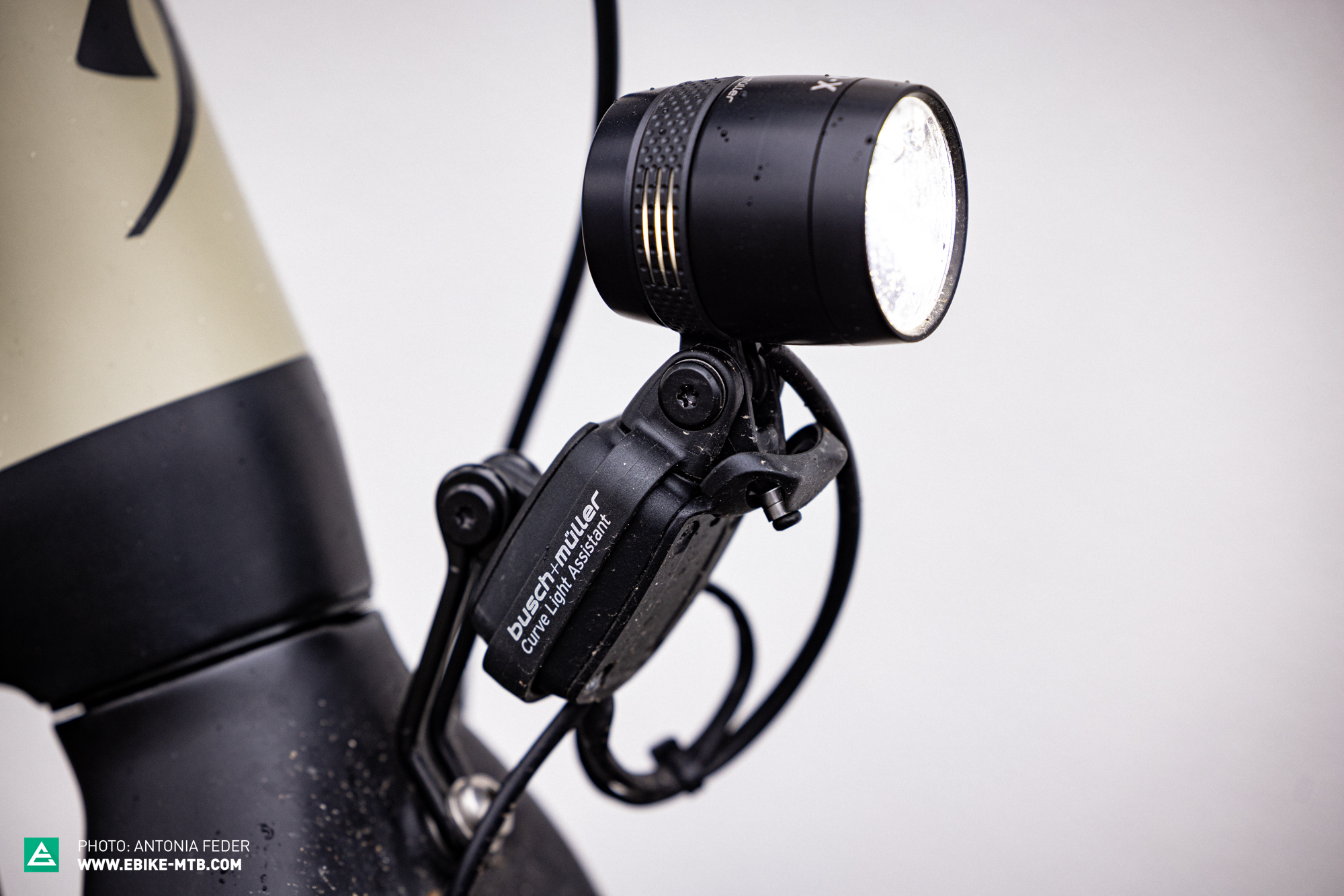
If you’ve ever ridden your ebike home late at night, you’re probably familiar with a common problem that your bike’s factory-installed lights fail to provide adequate visibility on unlit roads and paths. The typical solutions are either to invest in a much brighter – but expensive – light or to attach a secondary light to your helmet, which may not be officially approved for road use. So what’s the alternative? Enter Busch + Müller. With an RRP of € 99.90 (the LEVAL is available from many online retailers for less than € 60), the LEVAL curve light allows you to maximise the performance of your existing light while complying with German road traffic regulations.
Clever assistant – The Busch + Müller LEVAL curve light in detail
The Busch + Müller LEVAL curve light is basically an electronic assistant, although the name “curve light” suggests that it is a front light. In fact, it is a small electronic component mounted between the light bracket and the front light. The whole system can be placed either on the crown of the fork or on the handlebar, and can be installed upright or suspended, depending on your preference. If your lamp is mounted on a non-steering component such as a front rack, the LEVAL will not work properly and is not intended for this purpose. However, if you wish to upgrade your existing lamp with a curve light, you should check that the light you already have is compatible with the LEVAL.
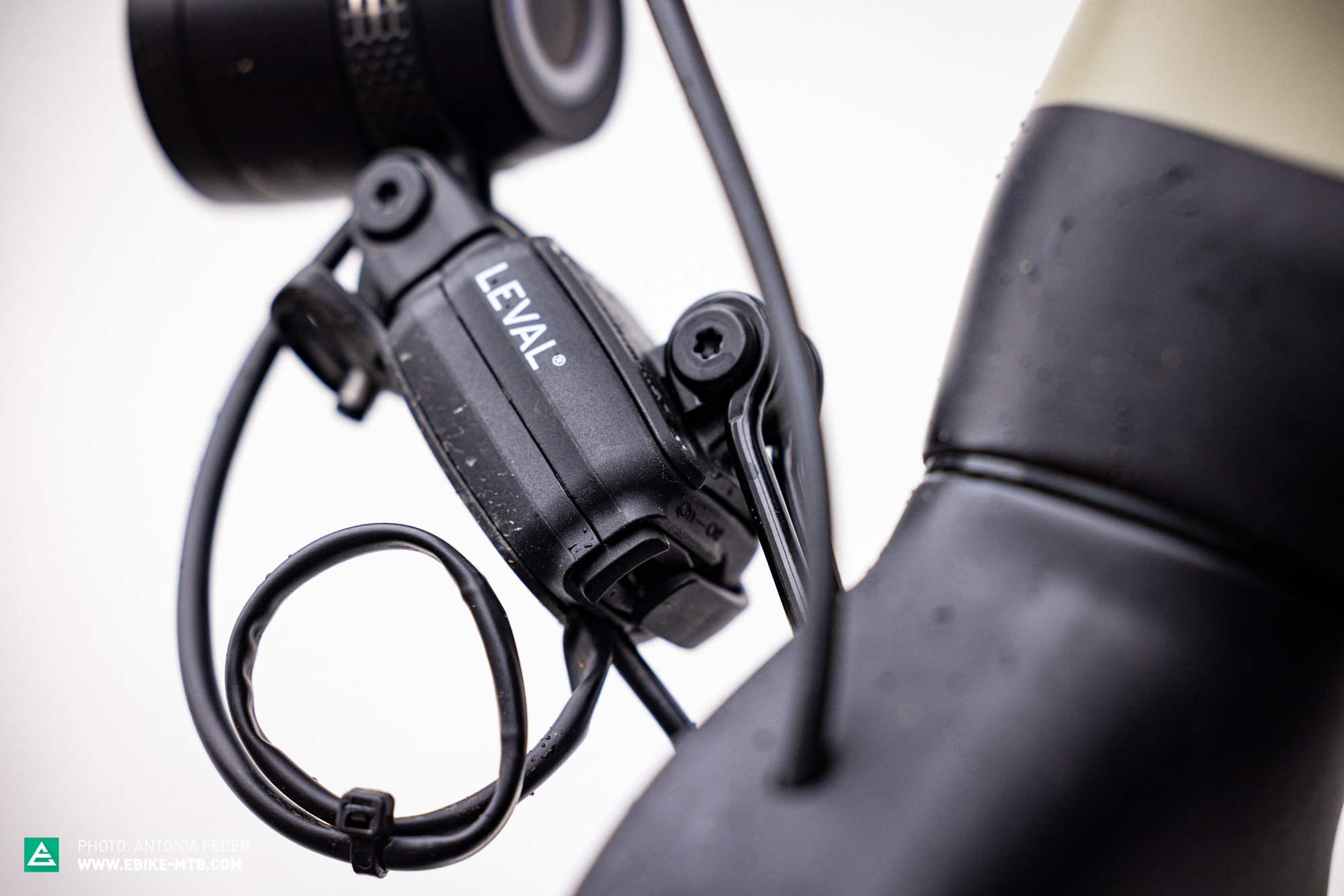
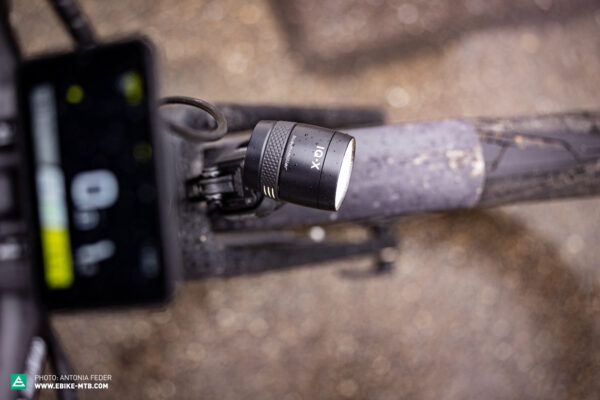
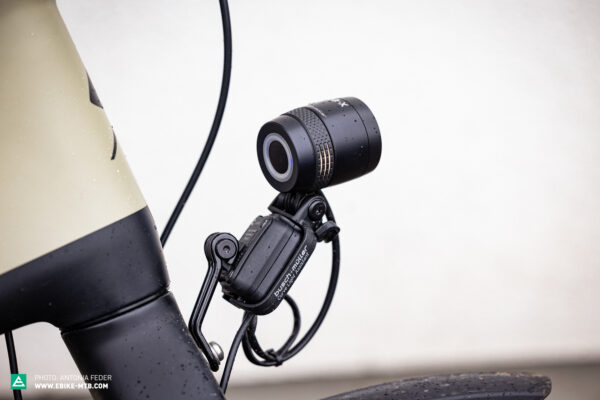
The existing light must be connected to the ebike battery and be within the range of 5–15 V. It can be operated with a separate battery, but that is not permitted in Germany. The LEVAL will even work with a dynamo on analogue bikes. Lamps such as the IQ-XM E Highbeam and the CYO Premium E from Busch + Müller are well suited to the LEVAL because they match the required voltage between 5 and 15 volts and also meet the other requirements. On the other hand, models such as the Busch + Müller BRIQ-S E or the Busch + Müller IQ-XL E Highbeam are not compatible with the LEVAL because their voltage range is too high and they could damage the curve light.
In addition, the weight of the lamp must not be too high. Busch & Müller do not specify the maximum load capacity, but it should be sufficient for most commercially available lamps. Only very heavy lamps could cause an unstable light pattern.
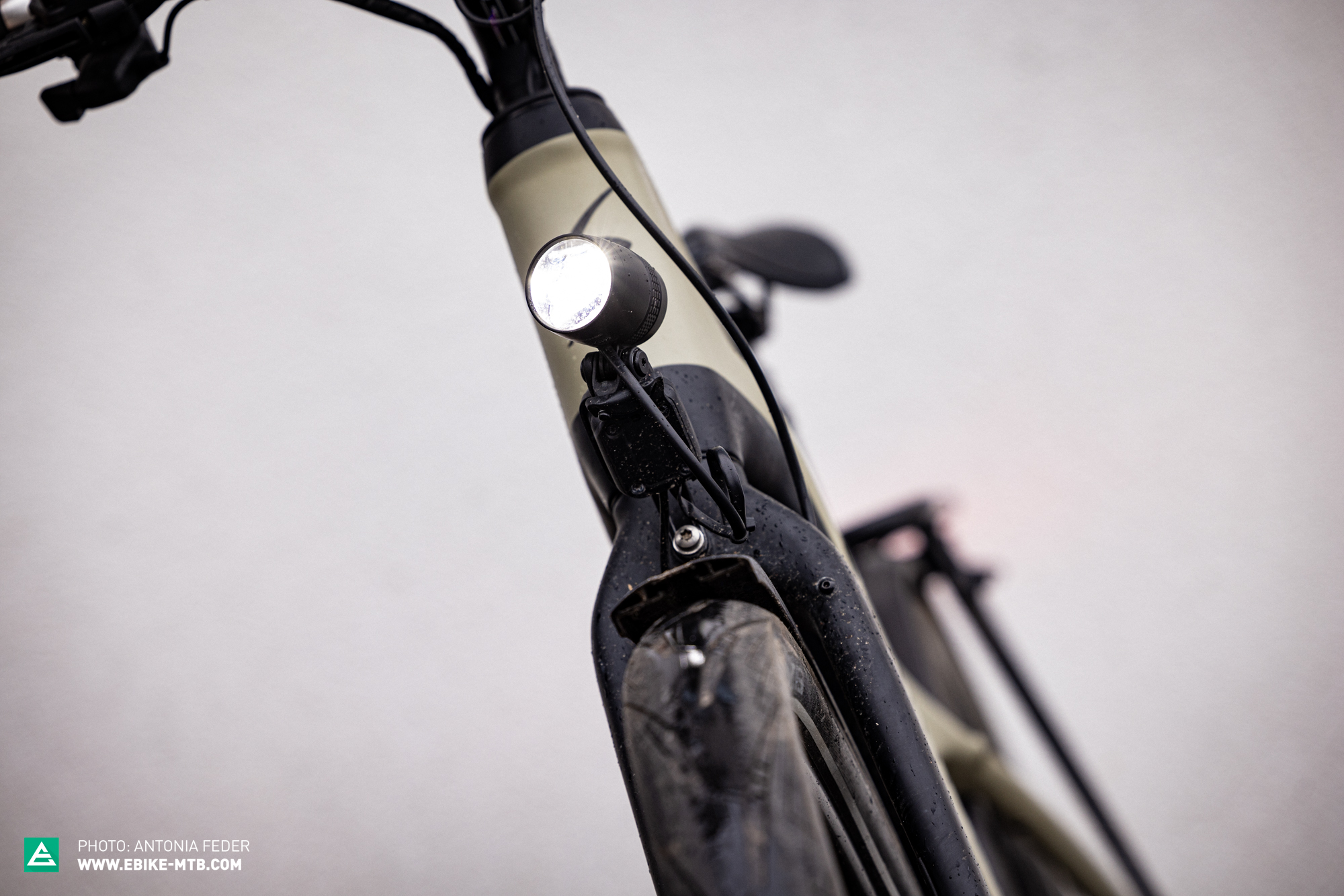
If everything is compatible, the power cable of the installed lighting system must first be connected to the LEVAL curve light. To do this, disconnect the power cable near the lamp and insert both ends into the openings of the cable plug supplied. Caution! When disconnecting the cable, ensure that you have at least 200 mm of cable at the end where the lighting system is suspended. The cable plug is then inserted into the curve light. Now mount the electronic assistant on a positioning adapter plate, which in turn is attached to the fork crown or the handlebar. The LEVAL can be fitted in four different positions on the adapter plate to allow for the best possible alignment of the light beam.
If your lamp is fitted with an external reflector on the underside of the lens, the movement may be restricted. There is no external adjustment in the system to tell the internal tilt sensor whether it is level and the light is shining straight ahead.
When the LEVAL is used for the first time, it calibrates itself and aligns itself to what it believes to be a level position. If the LEVAL fails to do this after several attempts, it will indicate that something is wrong by briefly swaying left and right. The manufacturer provide detailed installation and operating instructions.
The system only works when the ebike is switched on and the lights are in use. There is a switch on the underside of the assistant that you can use to deactivate the curve light assistant function, if you want to use the ebike as a torch.
The Busch + Müller LEVAL curve light in use
If you put the Busch + Müller LEVAL curve light through a cone slalom, you’ll see its ability to cope with rapid changes in direction and to illuminate the intended area quickly and accurately. At first, you might question the real added value of the curve light. However, when you deactivate the tilt sensor using the switch on the underside, and lock the light in the centre position, the benefits of the system become apparent. This is because the tilt sensor in the curve light also automatically detects whether the handlebar is being turned in or whether the bike is leaning into a bend, and takes the appropriate action. The Busch + Müller LEVAL not only turns to the side when cornering, but also raises the edge of the light on the inside of the bend. If you lean hard into a bend without the curve light activated, the light beam on the inside of the bend drops sharply and moves close to the front wheel. The line that the ebike is actually taking in the bend is no longer illuminated. With tilt sensor activated, however, the light beam ends exactly where you intend to go.

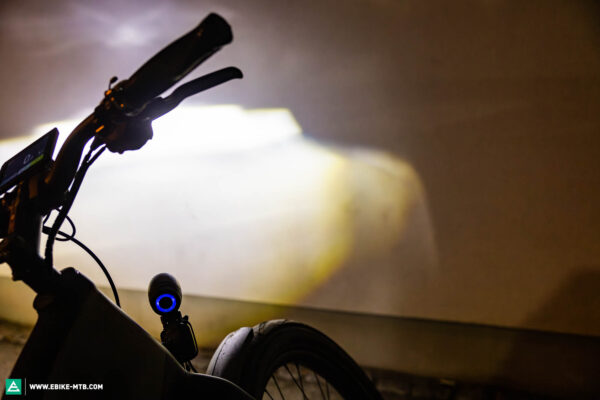
In our test, the manufacturer’s claim that no external adjustment is required was not entirely accurate. Occasionally, the curve light didn’t swivel back to its starting position. Instead, the beam would sometimes point slightly to the left.
Conclusion on the Busch + Müller LEVAL curve light
All in all, the Busch + Müller LEVAL curve light does not replace a super-bright high beam, but it is a clever solution for relatively little money that offers a great advantage on unlit roads. In practice, the LEVAL curve light impresses with its high reaction speed and good illumination. Installation of the Busch + Müller LEVAL curve light is also quick and easy thanks to the detailed instructions and can be carried out by almost anyone.
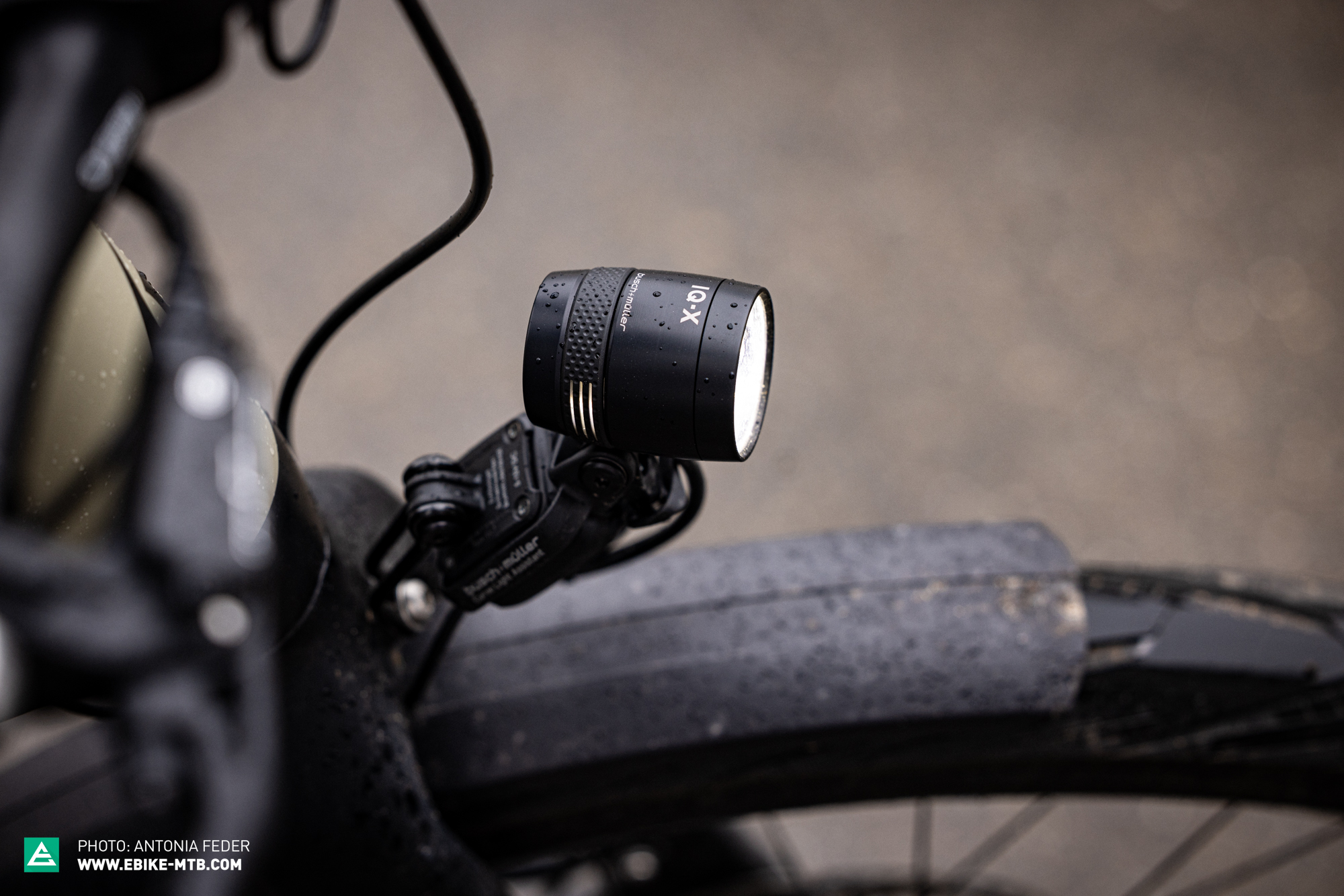
Tops
- easy assembly
- high response speed
- smart lighting concept
Flops
- straight light beam cannot be manually adjusted
- does not work with very powerful lights
For more info visit bumm.de
Did you enjoy this article? If so, we would be stoked if you decide to support us with a monthly contribution. By becoming a supporter of E-MOUNTAINBIKE, you will help secure a sustainable future for high-quality cycling journalism. Click here to learn more.
Words: Benedikt Schmidt Photos: Mike Hunger, Antonia Feder






